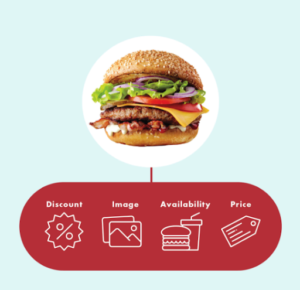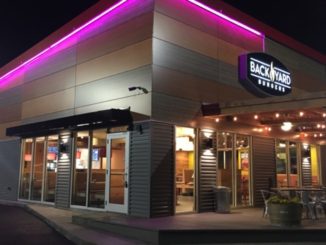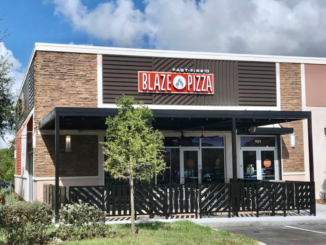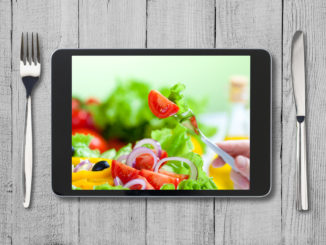
By Mahrukh Tahir, Marketing Manager at Qu - 11.11.2019
Let’s start by addressing the elephant in the room. I represent a POS software company, but that won’t stop me from admitting that POS systems just haven’t made it easy for enterprise restaurant operators to scale and configure menus. At Qu, we’ve worked tirelessly over the past year to build a unified menu management system powered by dynamic items to honestly address how broken POS has been for operators.
Menu Management Across Channels Is a Royal Pain
So let’s get honest: if you’re running 1-10 stores in the same city or state, there are some good solutions out there to help you streamline your menu—and we’re not one of them.
But when you start scaling your enterprise restaurant beyond 20 units, there are very few POS systems doing justice to your needs. It becomes a lot harder to scale your menu, while remaining ‘local’ to the tastes and preferences of your guests, and leveraging technology to enable, not inhibit, your growth.
The truth is, running a large business across multiple on- and off-prem channels while managing an ever-changing menu on all those channels can be a royal pain.
3 Signs You’re Suffering from Royal Menu Management Pain
Most enterprise operators have grown accustomed to using either legacy or “lightweight” modern POS systems to manage their menus. These POS systems lack item-level customization and single source data capabilities; resulting in huge menu management headaches. If you’re experiencing any of these symptoms, you’re a fellow sufferer:
1. Your POS system lacks a single database with a central core logic.
If you’re using a legacy POS, it’s been retrofitted for today’s digital world with brittle one-way integrations that allow you to use digital ordering and delivery partners. This one-way infrastructure has led to pricing discrepancies and a lack of a continuous data sync across channels. With many different ordering options, an enterprise today can have up to 20+ menus at a time! Without a continuous sync, managing updates across them is a recipe for disaster. Because legacy POS systems lack central core logic, they can’t support bi-directional integrations which are necessary in today’s fragmented menu environment.
2. Your POS system has static items that create administrative burdens and inefficiencies
Having static menu items means that your items cannot be pre-configured with contexts. For example, if your menu item has limited availability at a certain time of day (break or lunch only offerings), the order channels in which it’s available (in-store exclusive), or order types (such as add-on only), you can’t just add those contexts onto the master item. Instead, you’re likely creating custom groups for promotions, unique pricing, discounts, and more. Items end up belonging to numerous groups, and when a new item is added to the menu, it needs to be manually added to each group. No surprise—this causes a significant administrative burden.
3. You can’t get item-level data and insights across channels
With static items, you’re also forced to replicate an individual item if you’re making any modifications to it across channels or menus. This could mean you have 20+ versions of the same menu-item if it has slightly different characteristics on different channels.
This applies to simple updates like the naming convention of an item. Let’s use a hypothetical example of a classic menu item like ‘Burrito Bowl.’ On your restaurant’s owned digital menus, the item appears as ‘Burrito Bowl’ accompanied by salacious food photography that maximizes the digital real estate of your site (yum). Yet, due to limitations on templates, on a third-party delivery partner, the same item needs to appear as ‘Bowl’ with a different overhead icon-style photo.
With static items, you would be required to replicate the ‘Burrito Bowl’ and create a totally new item called ‘Bowl’ for your third-party delivery platform. I hear your pain—we all know it’s the same item! But your current POS doesn’t recognize it, and it’s requiring you to undertake a massive data standardization process. Every item modification requires you to duplicate the item and customize it over and over and over…and over again. This constant duplication results in a loss of data integrity and limits the ability to get item-level insights across all channels. And you’re forced to add a manual process whereby someone on your team needs to pull the performance of ‘Burrito Bowls’ + ‘Bowls’ across every channel in a manual report to get a master-view of the item’s performance.
I completely empathize with your pain, but I know this isn’t helping you. So let’s talk about a solution.
Start Doing Your Stretches – It’s Time for Flexible Menu Management
So let’s face it, restaurant technology vendors simply haven’t innovated fast enough to keep pace with the change impacting enterprise operators today. It’s left operators like you in a lurch to manage complex tech stacks with multiple disjointed menus. This also means that you’re at the mercy of third-party partners to provide the menu data, trends, and insights needed to inform your business decisions.
What operators need today is a flexible and unified menu management system. One that’s built for the complex needs of an enterprise-scale operation and can give you the insights you need.
Data is the Future of Restaurants & Dynamic Items Are How The Industry Will Get There
In a world where food trends are always changing, pricing wars ensue, and consumers expect ever more seamless experiences from their technology—data is king.
An item that was popular yesterday, may not be tomorrow. Conversely, something that you’ve offered for years and have considered taking off the menu, may become an overnight sensation. As much as it seems these trends are unpredictable and happen instantly, most of them are predictable if you have the right data at your finger-tips.
So, if you needed a motivator to transition to a unified menu management system, there’s nothing more I can tell you than this: you can’t afford to lose out on your data anymore. Because access to your guest data is the first step to insight-driven decisions. And a unified menu management system that is powered by dynamic items gets you unparalleled access to your guest data.
What are Dynamic Items?
Dynamic menu items are the opposite of static menu items. They are menu items—rooted in a unified menu management system—that can be tagged with unlimited attributes and modifiers. Instead of duplicating your menu item every time you need to modify it slightly for a channel or promotion, you can simply add context tags to the item.
 Dynamic items give operators the freedom to customize items, layer multiple dimensions and add attributes based on an item’s context—all without ever changing the master item.
Dynamic items give operators the freedom to customize items, layer multiple dimensions and add attributes based on an item’s context—all without ever changing the master item.
Qu is the first enterprise POS platform to bring dynamic items to the restaurant technology market. Operators can now configure every menu item to have unlimited dynamic contexts, including tags for:
- Item-availability at certain dayparts
- Recurrence (perfect for seasonal items!)
- Order channel specifications
- Order type specifications
- Different pricing across channels
- Limited time offers, promotion, and discounts
- Branded imagery that varies from channel to channel
Dynamic Items Simplify Menu Management & Enterprise Reporting
When you have a POS platform that is built with a central core database and a layer of open APIs like Qu, and you layer in dynamic items… well you’ve got the recipe for some powerful menu configuration capabilities that will allow you to capitalize on trends faster. And with item-level insights, you’ll see those trends coming a mile away.
The Power of Insights
In a survey conducted by Capgemini, 65% of company executives shared they fear becoming irrelevant if they don’t leverage data. One of their core frustrations with data-driven analytics is the lengthy process required to collect it and analyze it. 52% of executives agreed that the speed of their organization’s insight generation is constrained by their technology infrastructure. And they’re not wrong.
Most large restaurant enterprises with thousands of locations are making decisions based on last quarter’s results for the following quarter due to massive data normalization projects they need to undertake. Why? Because their POS isn’t the original source of data.
Qu is powered by a central core database and has an Enterprise Management Hub where all data configurations are built—with this system, data coming into the POS no longer needs to be normalized. Qu becomes the original source of data, eliminating cumbersome manual data projects associated with item configuration differences across channels.
Now, when a restaurant brand wants to configure it’s ‘Burrito Bowl’ as a ‘Bowl’ on DoorDash, instead of duplicating the item in their POS and undergoing a rigorous data cleaning project to get aggregated item-level data and insights, all they have to do is simply configure the ‘Burrito Bowl’ item to show as a ‘Bowl’ on DoorDash, upload the imagery associated with the same item onto the Enterprise Management Hub, and now—at their fingertips, in real time, they have access to the performance of their ‘Burrito Bowls’ on any channel. No item duplication required.
With dynamic items, data analytics take on a new meaning. Restaurant executives are able to make real-time decisions based on this week’s results. Having item-level data and insights can also have massive downstream benefits for your restaurant brand: opening the ability to see new channel opportunities, menu trends, and can inform the strategy for innovations.
Menu Management Freedom
Because you’re no longer duplicating an item and instead are adding contextual tags to it, you have opened the door to menu configuration freedom. Now, you’re able to configure your menu items based on what works for your business and teams, instead of being constrained by your technology’s rigid rules and limitations.
It’s Time for a System Shift Toward Unified Food Experiences
If data is King, than the speed in which data is accessed is the King’s army. Without speed and accuracy of data, actions are delayed, market opportunities are lost, kingdoms left unconquered.
Dynamic menu items provide the keys to the data kingdom, plus menu configuration freedom, and market agility. And the only way to truly have a unified menu management system is by having a dynamic item structure that emanates from single-core logic and one database. With this infrastructure in place, accessing granular data about the performance of menu items is simplified for restaurant executives. Now, making strategic decisions on how to optimize a menu items across channels and brands becomes a 2 week decision instead of a cumbersome quarter-long effort.
It’s time for operators to embrace a unified menu management system that empowers responsiveness and agility in the face of changing market demands and delivers the item-level insights they need. Dynamic, changeable items are the lynchpin needed to make unified menu management a reality. This will soon be a must-have for any operator seeking to provide more consistent food experiences across all their channels, and delivering exceptional value to guests.
 Mahrukh Tahir is a Marketing Manager at Qu, a company dedicated to transforming restaurant POS beyond its current fragmented state into a manageable, unified experience for enterprise operators and guests alike. Qu’s platform works at the intersections of order, production, and brand experience to deliver a unified food experience that helps solve the technology crisis operators are in today. Laser-focused on quick service and fast casual restaurant success, Qu constantly applies speed, flexibility, and innovative thinking to deliver solutions that drive healthier bottom lines for enterprise restaurants
Mahrukh Tahir is a Marketing Manager at Qu, a company dedicated to transforming restaurant POS beyond its current fragmented state into a manageable, unified experience for enterprise operators and guests alike. Qu’s platform works at the intersections of order, production, and brand experience to deliver a unified food experience that helps solve the technology crisis operators are in today. Laser-focused on quick service and fast casual restaurant success, Qu constantly applies speed, flexibility, and innovative thinking to deliver solutions that drive healthier bottom lines for enterprise restaurants
Are you an industry thought leader with a point of view on restaurant technology that you would like to share with our readers? If so, we invite you to review our editorial guidelines and submit your article for publishing consideration.




